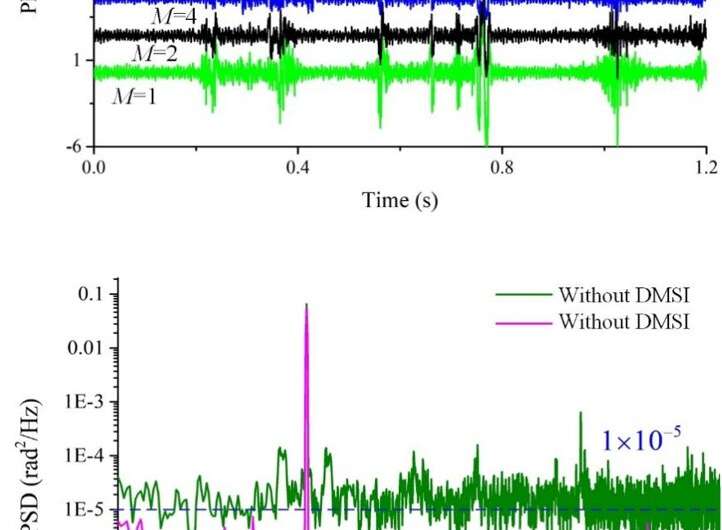Scientists enhance distributed fiber acoustic sensing performance for marine seismic detection

A Chinese research team from the Shanghai Institute of Optics and Fine Mechanics (SIOM) of the Chinese Academy of Sciences (CAS) has developed a new method to enhance the practical performance of distributed fiber acoustic sensing (DAS) for marine seismic detection. Results were published in the Journal of Lightwave Technology.
DAS has many apparent advantages, including large coverage, high spatial-and-temporal resolution, and strong ambient adaptability. It is widely applied in many fields, especially in marine seismic detection, ocean acoustic monitoring, etc. Thanks to the unique capability to form large scale and synchronous detecting array, DAS can make up for the lack of existing detection techniques.
The main challenges are insufficient signal-noise ratio (SNR) and reliability, the former is due to the in-pulse interference of DAS sensing principle and the inhomogeneity of the refractive index of the fiber, while the latter is mainly limited by the extremely weak Rayleigh scattering coefficient of the fiber. These problems greatly limit the reliability of DAS in existing application fields and are not good for DAS to be widely used in weak signal monitoring.
In this study, the researchers proposed a multi-channel data fusion method based on distributed sensing paradigm, which broke through the inherent physical limitations of DAS and realized the practical performance enhancement.
Since 2017, the team has successively realized and endowed DAS with distributed stereotaxic and directional listening ability from positive and negative associative thinking, based on the unique research work on distributed intensive detection features of DAS, in-depth cognition and mining disturbance source location information, and the internal connection of distributed sensing data spatial correlation.
In reference to the previous work, they proposed a new paradigm of distributed sensing, and attempted to use this correlation to solve the inherent physical limitations of DAS and achieve performance upgrades and application implementation.
According to the researchers, developed on the spatial diversity idea, the channel independence of signal fading and equal gain synthesis were utilized to solve the problem of signal fading. And the SNR and sensitivity of the system were improved by using multi-channel beamforming with the idea of spatial reuse and channel independence of system noise.
As a result, the new paradigm of distributed sensing was applied to DAS technology to suppress signal fading and improve sensitivity. It is expected to solve the problems of poor reliability and low detection ability of weak signals in practical applications and promote the large-scale application of DAS, especially in marine seismic detection, ocean acoustic monitoring, etc.
More information: Zhaoyong Wang et al, Practical Performance Enhancement of DAS by Using Dense Multichannel Signal Integration, Journal of Lightwave Technology (2021). DOI: 10.1109/JLT.2021.3098330
Provided by Chinese Academy of Sciences




















